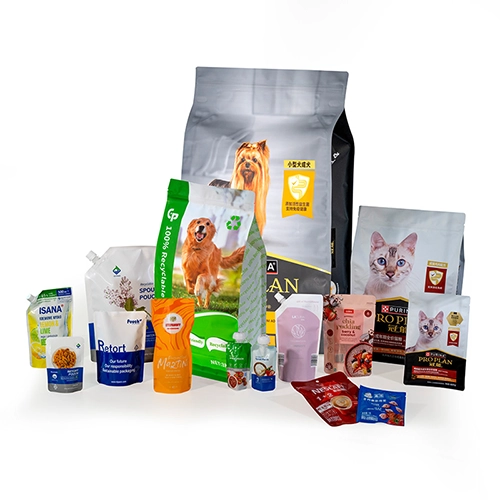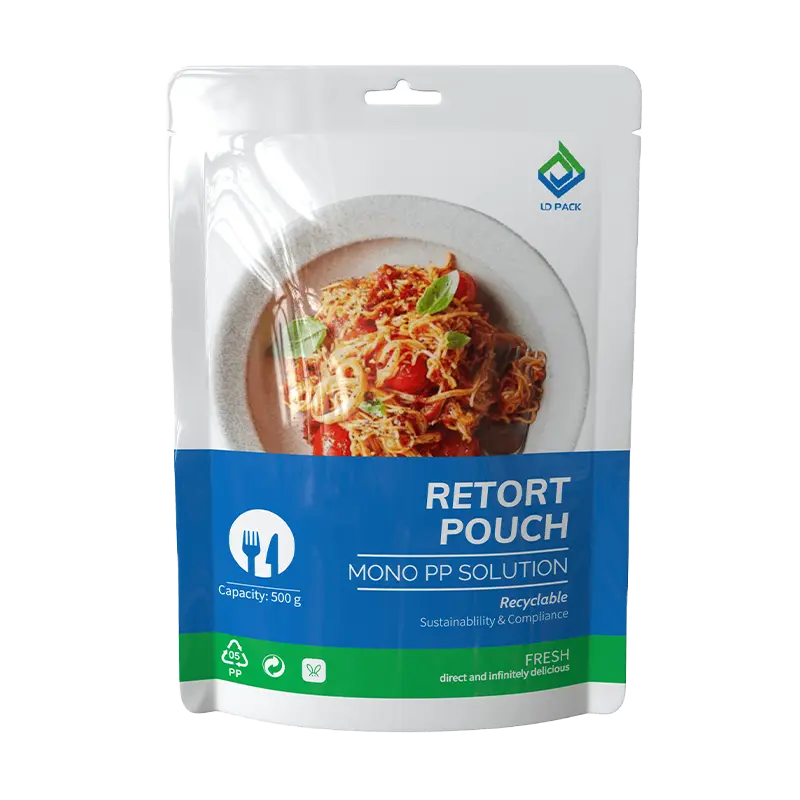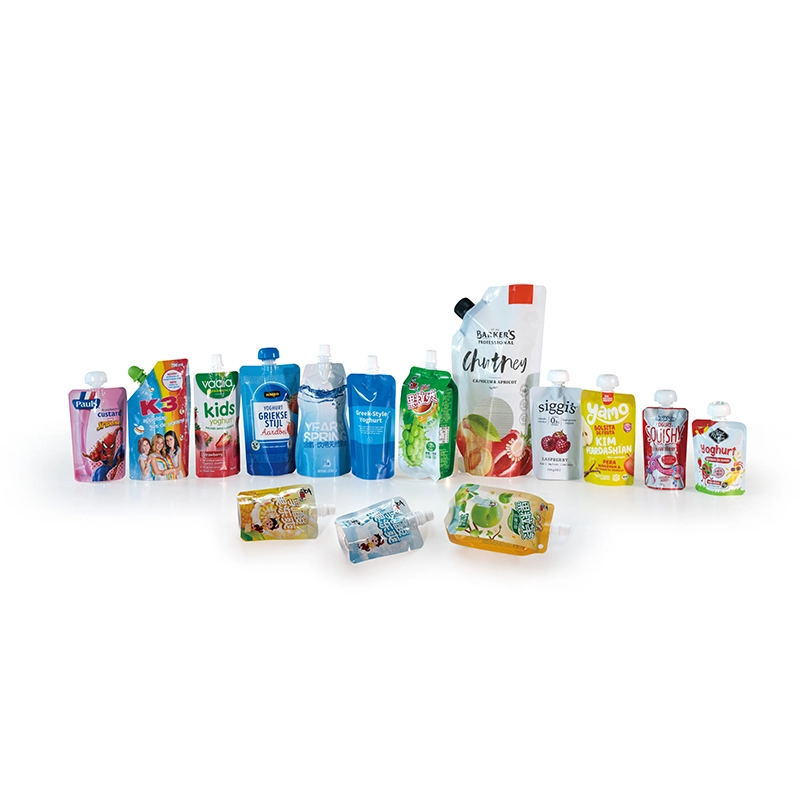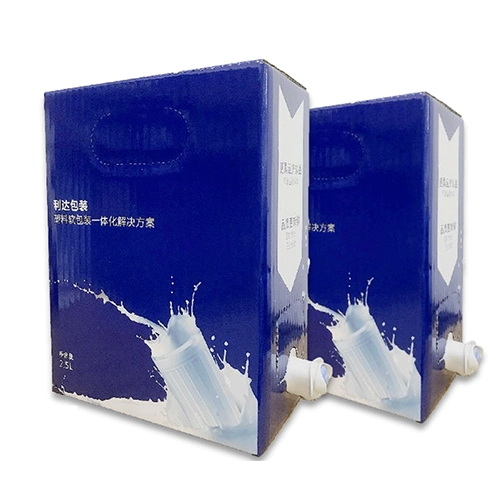Retort Pouches for Wet Pet Food
1. Definition and Development of Retort Pouches
Retort pouches are flexible packaging designed for high-temperature sterilization (121℃–135℃). They are widely used in food, pet food, condiments, and medical products. The pouch extends shelf life through heat treatment and offers good barrier, puncture resistance, and sealing properties.
The development of retort pouches dates back to the 1960s, originally created by the U.S. Navy for space food. Japan later introduced them to the consumer market, where they became a mainstream solution for convenient food packaging. In recent years, driven by environmental policies (such as plastic restrictions) and rising demand for convenience, retort pouches have been evolving toward recyclable and biodegradable materials, such as mono-material structures, bio-based polyester films, and solvent-free lamination.
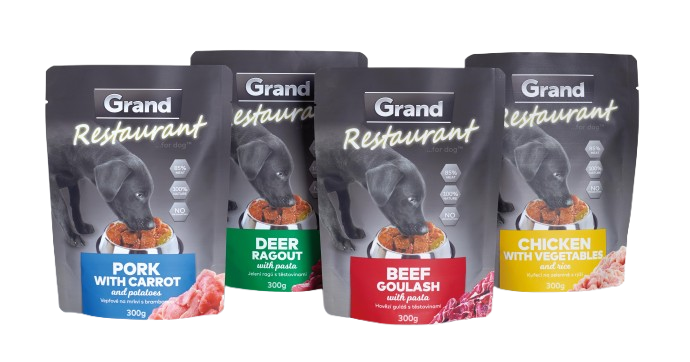
2. Global Market Size and Growth Drivers
(1) Market Overview
The global retort pouch market is growing rapidly, driven by demand in food and medical sectors. It is expected to reach USD 4.5 billion by 2030, with an annual growth rate of 6.8%. Wet pet food, a major application, is boosting growth—China’s wet pet food market alone exceeded CNY 20 billion in 2023.
(2) Explosive Demand for Wet Pet Food
Wet pet food, with its high moisture and balanced nutrition, is more prone to microbial growth and requires high-temperature sterilization. Retort pouches offer key advantages here: they withstand 121°C to 135°C, effectively killing spores and preserving nutrients.While widely used in Europe and North America, demand is growing fastest in the Asia-Pacific region, especially China, due to rising pet consumption.
3. Industry Pain Points and Technical Challenges
(1) Production and Cost Pressure
Despite their superior performance, retort pouches involve complex manufacturing and high costs. For example, the aluminum foil layer—often imported for pinhole resistance and flatness—can drive raw material costs up to 60% of total production.
(2) Technical Bottlenecks and Quality Control
Insufficient Heat Seal Strength: During high-temperature sterilization, improper control of sealing temperature or pressure can cause pouch failure, impacting shelf life.
Solvent Residue Risks: Solvents used in printing and lamination may remain in the pouch, requiring strict testing to meet environmental standards, such as those of the EU.
Material Compatibility: Wet pet food’s fat and moisture content demands inner layers (e.g., CPP) to have oil resistance and high barrier properties. Domestic materials still lag behind imported ones in performance.
4. Material Structure and Process Innovation
(1) Typical Material Combinations
Retort pouches typically use multi-layer laminates, with common structures including:
Three-layer: PET/AL/CPP
PET provides mechanical strength; AL blocks light and oxygen; CPP ensures heat sealing.
Four-layer: PET / AL / PA / CPP
PA (nylon) adds puncture resistance, ideal for bone-in wet pet food.
(2) Material Performance Optimization
Polyester (PET): Typically 12 μm thick, requires heat resistance and flatness; domestic films still need improvement in stability.
Aluminum Foil: Usually 7 μm thick, mainly imported from Japan and South Korea to ensure low pinhole rates and high barrier performance.
Polypropylene (CPP): The inner layer must meet a heat seal strength of ≥ N/15mm and pass impact tests to prevent damage during transport.
(3) Key Process Control Points
Lamination: Dry lamination is mainstream; adhesive coating must be precise, with solvent residue controlled below 3 mg/m².
Aging: Typically aged at 50–55°C for 72 hours to ensure full adhesive crosslinking.
Pouch Making: Heat sealing temperature ranges from 170–230°C; pressure and time must be adjusted based on material thickness to prevent inner layer resin squeeze-out and weak seals.
5. Pouch Types and Functional Adaptation
(1) Common Pouch Types and Applications
3-side seal pouch: Low cost, high production efficiency; ideal for standard wet pet food.
Stand-up pouch: Reinforced bottom allows upright display; popular for premium products.
Spouted stand-up pouch: Features a cap or spout for easy resealing and repeated use, enhancing user convenience.
(2) Functional Design Trends
Transparent windows: Partially clear areas to show contents, boosting consumer confidence.
Microwave compatibility: Use of foil-free PVDC laminated films allows high-temperature resistance and microwave use.
6. Core Advantages of Retort Pouches vs. Other Materials
(1) Key Advantages
Safety: Sterilization at over 121°C extends shelf life up to 18 months, far beyond standard plastic packaging.
Nutrient Retention: Rapid heating minimizes loss of heat-sensitive nutrients like vitamin B.
Eco-Friendliness: Recyclable designs and biodegradable materials meet EU environmental standards.
(2) Comparison with Other Packaging Materials
Feature | Retort Pouch | Cans(Metal/Glass) | PET Bottle |
Heat Resistance | 121-135℃(High Pressure Processing) | >121℃(High Pressure Resistance) | ≤70℃(Heat-Sensitive) |
Barrier Performance | Ultra High (Multi-layer Laminate + Aluminum Foil / PVDC) | Ultra High (Complete Barrier) | Medium (Relies on Multi-layer / Coating Technology) |
Cost | Medium (Material and Process Complexity) | High (Manufacturing + Logistics Cost) | Low (Mass Production)) |
Transparency | Optional (Aluminum Foil Opaque / PVDC Transparent) | Glass Transparent / Metal Opaque | High (Fully Transparent) |
Applications | Wet Pet Food,Ready-to-Eat (RTE) Food,Medical Packaging | Long-term Storage Food, Acidic/High-fat Products | Beverages, Short-term Liquid Storage, Low-temperature Packaging |
Retort pouches offer significant advantages in sterilization adaptability, lightweight structure, and functional features like microwave compatibility. Despite higher costs, their extended shelf life and safety make them irreplaceable in the wet pet food sector.
Cans remain unmatched for ultra-long preservation and extreme condition tolerance but fall short in portability and cost efficiency.
PET bottles dominate the daily liquid packaging market due to low cost and transparency, but limited heat resistance and barrier properties restrict their use in high-temperature sterilization applications.
Retort pouches, with their irreplaceable technical advantages, have become the core solution for wet pet food packaging. As material science and production processes continue to advance, improvements in cost control, environmental performance, and user experience will drive the next growth cycle. In the future, collaborative innovation across the industry, particularly the shift toward sustainability, will be the key competitive battleground.

